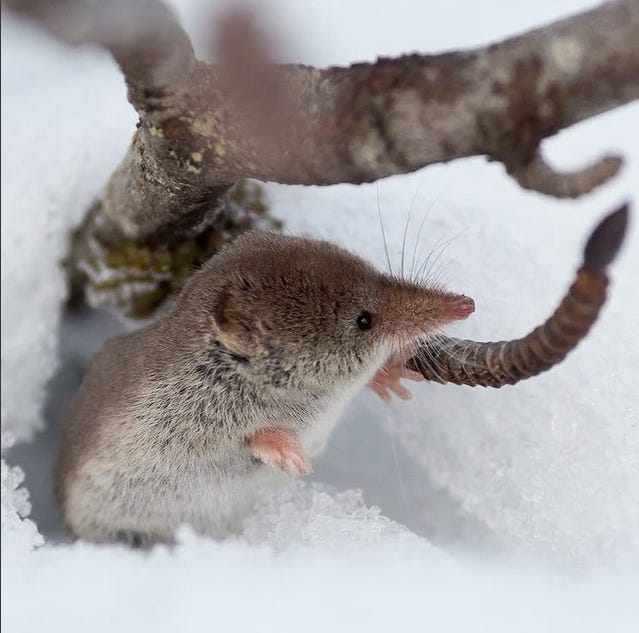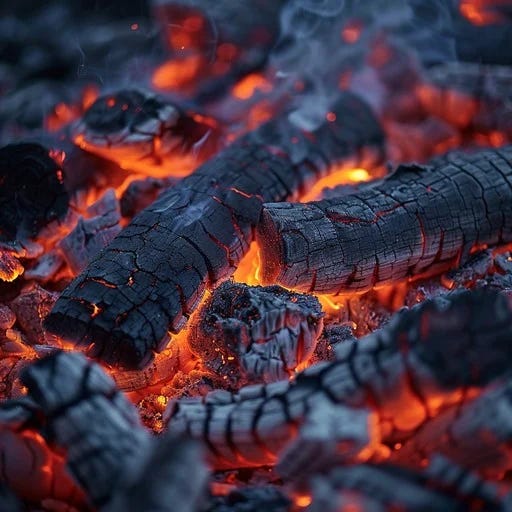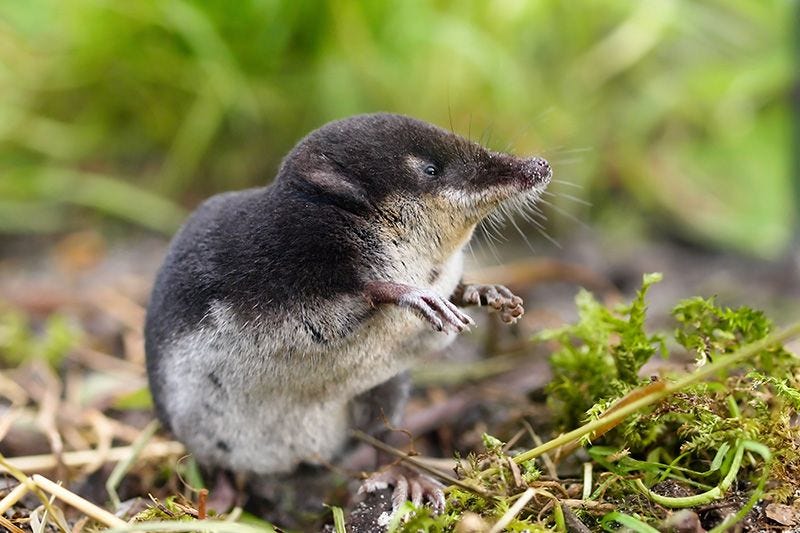We are less than a week away from Christmas Day, and so the end of Commoners’ Advent (although I am determined to also write for each day of Twelvetide), and it feels that we have been on a long journey through the winter dark. We have followed many meandering paths, and there are plenty more to follow yet, but through it all much of my mind has been on our Advent Church of the Shepherd and the Shrew, which I wrote about on day 4.
“…I am nothing but Thy house,
Empty stands the sacred porch;
Yet I can shelter shrew and mouse,
Light a glow-worm for Thy torch.
From a spider’s tapestry
Weave a splendour fit for Thee.”
~ Joan Warburg
The marsh church seemed to just pop up out of nowhere and took my heart. Since then I have been thinking a lot about shrews and how they might fare through the frosty midnight of the year and I would like to share something of that today. Truly, they are the most overlooked and yet extraordinary of creatures.

I began writing this piece on Wednesday, 18th December which feels the perfect day to explore the winter preparations of our tiny shrews, because today is the first of three Winter Ember Days, days of preparation for the season ahead. This Ember Week will conclude with the final two days on Friday and Saturday.
The four Embertides; Advent, Lenten, Whitsun, & Michaelmas, or Winter, Spring, Summer, & Autumn, are some of my favourite days of the year. These are ancient festivals of the agricultural church year, preparation times of prayer, fasting, & reflection for the season to come. Their dates vary slightly each year and can be worked out from the old rhyme, "Lenty, Penty, Crucy, Lucy", with the Ember Days beginning on the first Wednesday following these festivals ~ the first Sunday in Lent, Pentecost, Holy Cross Day, and St Lucy's Day. Being connected to Easter, both Lent and Pentecost are calculated by the moon, with Holy Cross Day and St Lucy's Day fixed dates calculated by the sun (14th September & 13th December respectively).
The 'ember' may come from the Anglo-Saxon ymbren, a circuit or revolution (from ymb, around, and ryne, a course, running), relating to the annual cycle of the year. The word occurs in Anglo-Saxon compounds such as ymbren-tid 'Embertide', ymbren-wucan 'Ember weeks' , ymbren-fisstan 'Ember fasts', ymbren-dagas 'Ember days'.
The Embertides offer valuable pivots and anchors at these shifting points in the year when many of us are wobbled off our axis and need a pause to breathe deeply and settle ourselves. They were once a time to offer thanks for the gifts of nature, to learn to respect them in & of themselves (not just for what they offer us), to use resources wisely & only in moderation, & to support those in need. These days of kinship, solidarity, & reciprocity with all beings, have become, if they are remembered at all, times of fasting for the sake of fasting, for the denial of matter, & for the ordination of clergy; the final act of 'thumbing the nose' at cycles whose very essence is the antithesis of hierarchy.
Rather, the Embertides are days to be 'humbled', in the most positive sense of 'grounded', from the root 'humus', 'of the earth', which is also the root of the word 'human'. But, so great is our disconnection from the ground beneath our feet, that we took humility and made it a source of division. In feudal England, the lowest cuts of meat, or 'umbles'; the leftovers when the upper classes had taken their share, were provided to the 'lower classes', or the common people, so that they could eat 'humble pie'. No wonder then that our sacred festivals contain within them frequent calls for the rich to share freely with the poor, and for us all to ensure that no one 'falls through'; something that has always been especially important in the winter months and in the ‘hungry gap’ of early spring.
The Embertides remind us that we are in deep & intimate relationship with the land & the turning of the seasons, that justice & equality always come from below, never willingly from above, and that there is no justice without land justice.
For each of the Embertides, we gather in the Little Church of Love of the World and stitch our prayers into the cloth of the coming season. We share what makes our souls sing and what draws us into silence. And we prepare for what lies ahead so that we might navigate the tide with grace and a modicum of sanity intact, because no turning is easy.
In one of my most beloved Advent books, ‘All Creation Waits: The Advent Mystery of New Beginnings’, author Gayle Boss, who lives on Michigan’s west coast, writes about the ways in which different creatures around her prepare to ensure their survival through the dark. She begins by sharing her reasons for creating an Advent Calendar of creatures for her children as a way to help her family sink into the meaning of the season;
“Looking at the animal portraits year after year shows us how a healthy soul responds to encroaching darkness. And there’s more than one response. There’s the turtle response, the loon response, black bear’s response. . . . When that primal fear of the dark—of the end—begins to slide over us, animals unselfconsciously and forthrightly offer unfearful responses. They take in the threat of dark and cold, and they adapt in amazing and ingenious ways. They shape themselves to life as it is given.”
She writes of the painted turtle who, at a particular moment in the autumn, hears an ancient call to take a deep breath, swim to the muddy bottom of her pond, and dig herself in, burying herself and remaining in deep stillness and silence;
“…beneath her layer of mud, beneath the weight of frigid water and its skin of ice and skim of snow, everything in her has gone so still that she doesn’t need to breathe…she slows herself beyond breath in a place where breath is not possible. And waits…she waits. It is her one work, and it is not easy. Oxygen depletion stresses every particle of her…Out of her bones, then out of her shell, her body pulls calcium, slowly dissolving her structure, her shape, her strength…though she is dissolving, every stressed particle of her stays focussed on the silver bead of utter quietude. It’s this radiant simplicity that will save her…”
The honeybee, the wild turkey, the garter snake, and the little brown bat survive in community, share resources, including warmth and hope.
Of the honeybee;
“…all females in a winter hive—they’re clustered together inside, queen at the heart of their sisterhood…twenty thousand, huddled together, shivering, can keep the queen and the colony’s honey supply at their core at a tropical ninety-two degrees Fahrenheit…(this) calls for carefully timed choreography. When the bees on the outside layer of the cluster feel their body temperature fall...they push inward toward the radiant center. The next outermost layer takes their sisters’ place, backs to the cold. From edge to center, center to edge, inward and outward they move, one hypnotic, looping dance. At the heart of the dance lies the queen. She is every bee’s reason for being. In Advent, she’s laying no eggs. There is no brood to feed. Each bee senses that her one obligation is to give the smallest motion of her flight muscles to the collective work of keeping the queen and the colony’s honey stores warm. The whole hive knows they will survive only if they shiver together.”
And the wild turkey, who with her sisters, tests the surface of the frozen swamp edge to gauge her safety in walking out;
“to patches where warmer groundwater bubbles to the surface…(here) grows a wild salad of winter cress and ferns..Gingerly they test the surface. If it holds they quick step a hundred yards or so to a wild field, eager beaks gleaning barberry, winterberry, and hawthorn bushes…If the snow doesn’t thaw, fir branches make sturdy canopies to roost beneath…each hen on her branch fluffs her feathers against the cold. Together, they might sit fluffed for more than a week burning body fat, calling reassurances to each other, especially the youngest, of slightest heft. Together we can outlast this, right here in this sufficient place.”
Others survive alone; awake or dormant, curled into themselves in a sustaining prayer. All have their strategies to survive. Still others, like the lake trout, live on through the hope of their offspring.
In Autumn, “males and females swam over the great rock piles where they had first come awake, silver sides pressed together. When the female swam away and resumed her solitary lake wandering, she left behind thousands of fertile eggs, fallen from her body into crevices between the cobbles. It’s a kind of faith this shining fish practices, returning, perhaps from a vast distance, to plant life in the place where she came to life. It’s faith in the goodness of the rocks, their sheltering crannies, their cold-water cradles. She tucked her eggs there, away from predators, away from churning currents. Then she left. She’s done all she can do. Vital but dormant, the eggs wait, as she once waited, until winter ends. It’s what they must do to wake.”
And, so I hoped to learn what our tiny church shrew might do to sustain herself through the wild winter on the lonely marsh. These are lean times for many and the hungry gap widens year upon year. It is almost impossible to believe that a being so small could survive without going to ground and sleeping through the long dark. And yet she stays active; the frost and snow still scattered with the pattern of her pawprints and the trail of her tail; a constellation of faith that life endures.
The common shrew is one of the most ubiquitous mammals in Northern Europe. Estimates suggest that there are around 41,700,000 shrews in the British Isles, with up to 50 per acre in our woodlands. We have three main shrew species here; the common shrew, the pygmy shrew, and the water shrew, with the lesser white-toothed shrew found only in the Channel and Scilly Isles.
Common shrews are just 2.2-3.2 inches long, and weigh between 0.2-0.4 ounces. Water shrews are so tiny that they are literally able to walk on water (which I may have to return to at Lent. Ha!)! Like all the shrew species, common shrews are active day and night, taking only short rests between long bursts of activity in search of food. They live for only fourteen months at most but are, of course, prey to owls, kestrels, stoats, weasels, foxes, and cats. Their breeding season lasts from April to September, with two to four litters of five to seven babies each year. The young are weaned and are living their own lives within 22 to 25 days. Before this, when out and about, they follow their mother in a caravan, each holding the tail of the baby in front. Here are some tiny shrews doing just that;
Even more delightfully, if that were possible, like bats, they are capable of hunting by echolocation which they achieve via “high frequency tittering”.
Surprisingly, shrews are not rodents. They are insectivores and carnivores, having sharp, rather than gnawing, teeth and living on a diet of insects, worms, spiders, amphibians, and even small rodents. They have solved the problem of tooth wear and tear by tipping them with iron, giving them a red tint. Both hugely territorial and aggressive, they are fierce, if tiny, hunters. To hunt successfully they rely on their keen hearing and sense of smell as their eyesight is poor. Indeed, the water shrew’s order Eulipotyphla translates as "the truly fat and blind’. "Shrews must consume 200-300% of their body weight each day, and eat every 2-3 hours in order to avoid starvation. They are unable to hibernate because their tiny bodies are too small to store fat reserves.
“Who giveth snow like wool:
scattereth mists like ashes.
He hurleth hail like stones:
who shall stand before the face of his cold?” (Psalm 147: 16-17)
And so how can they possibly survive midwinter, when the ground is frozen and insects are scarce? The answer, named “Dehnel’s phenomenon” after the scientist who first spotted the effect, is extraordinary; they shrink their skulls and brains and regrow them in the spring! During this process, shrews lose 10–20% of their body weight, including their brain, skull, heart, lungs, spleen, and spines. This is due to changes in their internal organs and skeleton, rather than loss of fat. In spring they increase in size again by as much as 83.4% compared to their winter selves, although their brains never quite grow to their former size. It remains a mystery why this is so. This is their trade off with the turning of the year. The dark always leaves its mark.
Brains are extremely expensive organs in terms of survival and need a great deal of nutrition in order to function, which is why it’s believed that humans only began to develop larger brains when we discovered the use of fire in cooking, thus making nutrients more readily available to our bodies. By reducing the size of their brain during winter shrews considerably reduce the amount of energy needed to survive and so can become less active, remaining mostly under the snow and thus reducing the risk of becoming prey to a hungry owl.
Tiny shrew, a dot on a snowflake on the wild, wide marsh, sings piercing prayers to the whirling stars for the snow to offer a blanket for her fitful winter rest, a protection from the talons of the silent-feathered owl who comes like a ghost to steal her breath. Busy beneath the drift and drive, she scamper-seeks morsels to keep her alive. To survive, she offers sinew, tissue, blood, and bone to the hungry cold, denying nothing, knowing that, to endure, her mind cannot show her the way. Instead, she must shrink into non-thinking, her heartbeat a metronome counting the moments until the earth warms again.
But, here in this wild place of hoarfrost and heart, she is blessed by the presence of the little marsh church, surrounded by water and the rustle of water reeds, a place of carols and candles, song and stone. Here are shepherds, smelling of “dirt, damp wool, and milk”1. Here, are evergreens wound around ancient wood. Here, she can shelter in the dark, overwinter and watch for the coming of the Child of Winter Stars. Reflected in her obsidian eye, a comet blazes its trail, tracing a map to the humble bringer of hope for shepherd and shrew, for owl and for the marsh herself, who also waits. Here, together, they keep their Embertide as they wait out the midnight of the year. Soon, he will be here…
#CommonersAdvent #OldAdvent #CelticAdvent #StMartinsLent #WinterLent
I am determined to continue offering my work free of charge, because that too is resistance, but if you would ever like to support me with pennies you can do that at https://ko-fi.com/radicalhoneybee. Thank you so much, both for pennies and for all other forms of support, all of which are worth more than their weight in gold.
References:
On the Embertides ~
FishEaters and here for Advent Embertide
The water shrew and here.
The Pygmy Shrew and Country Diary: There’s No Taming of the Pygmy Shrew, The Guardian, 2021
Steve Ely reads from his poetry book; ‘Lives Of British Shrews’
Guide to Britain’s shrews, mice, and voles, Countryfile
Small-minded? Shrews shrink their skulls to survive winter, study shows, The Guardian, 2017
Shrinking instead of growing: how shrews survive the winter, Max Planck Institute of Animal Behavior, 2020
Snuggling down for winter and shrinking shrews, Charlotte Owen, Sussex Wildlife Trust, 2023
The Curious Life of the Shrew, PTES
Where do animals go during the long, cold, dark winter?, Natural History Museum
Strange and Unbelievable Facts About Shrews, Cool Green Science
Britain’s Shrews ~ Living on a Knife Edge , Fiona Mathews, Mammal Society
Meet Little Shrew ~ Kate Bush for War Child
From ‘All Creation Waits: The Advent Mystery of New Beginnings’ by Gayle Boss, 2016, p. 719 (Kindle edition)














Thank You so much for this. So much fascinating information on this beautiful creature. The videos are gorgeous and that church in the snow is magical. It's like time has stood Still. The carol is so lovely too. What a joyful read. 🥰😊
This is so beautiful, Bee! Thank you for the reminder of embertide. I love the idea of the shrew shrinking their brain in the winter. Sometimes I think that's how I survive as well!